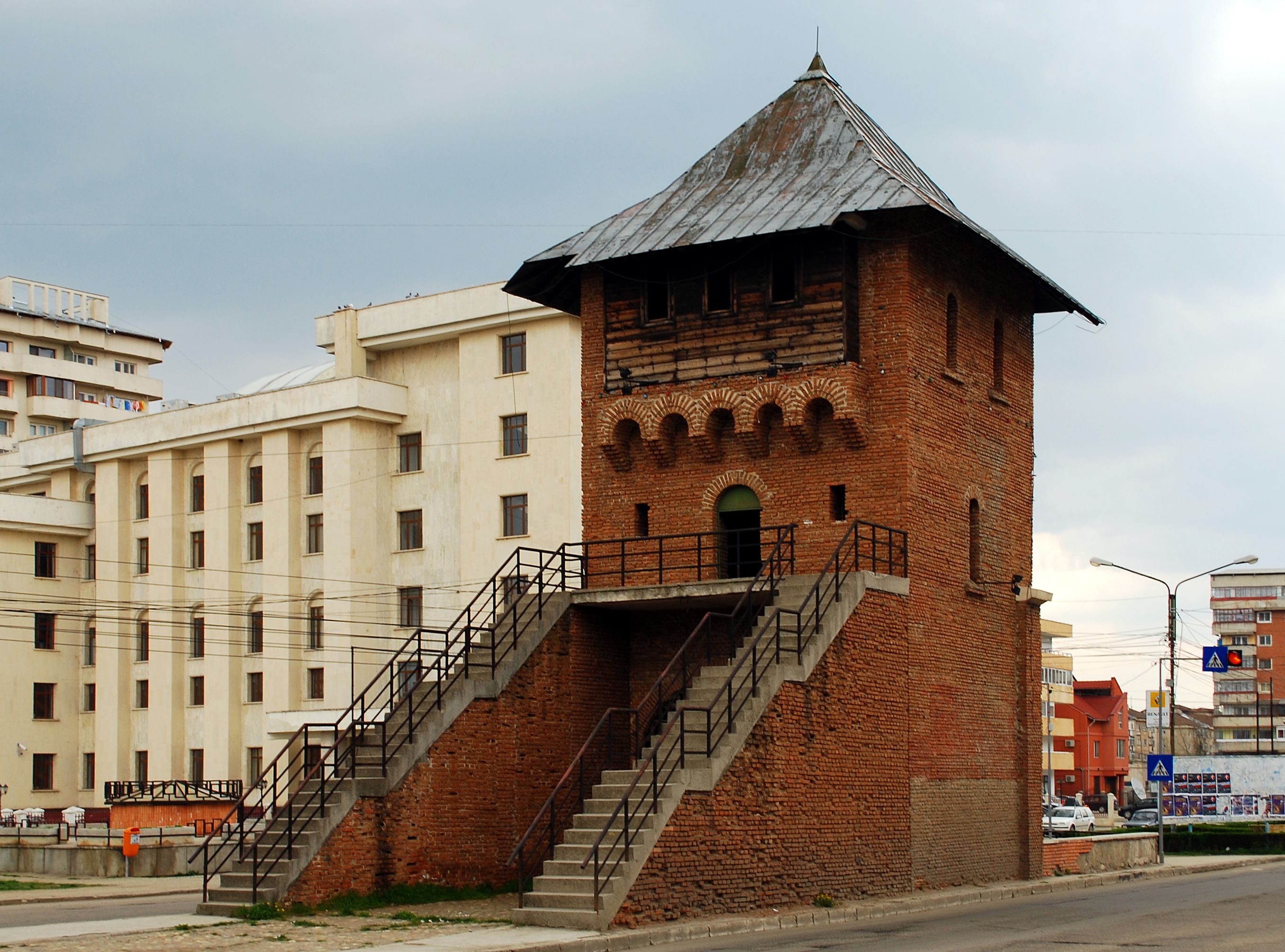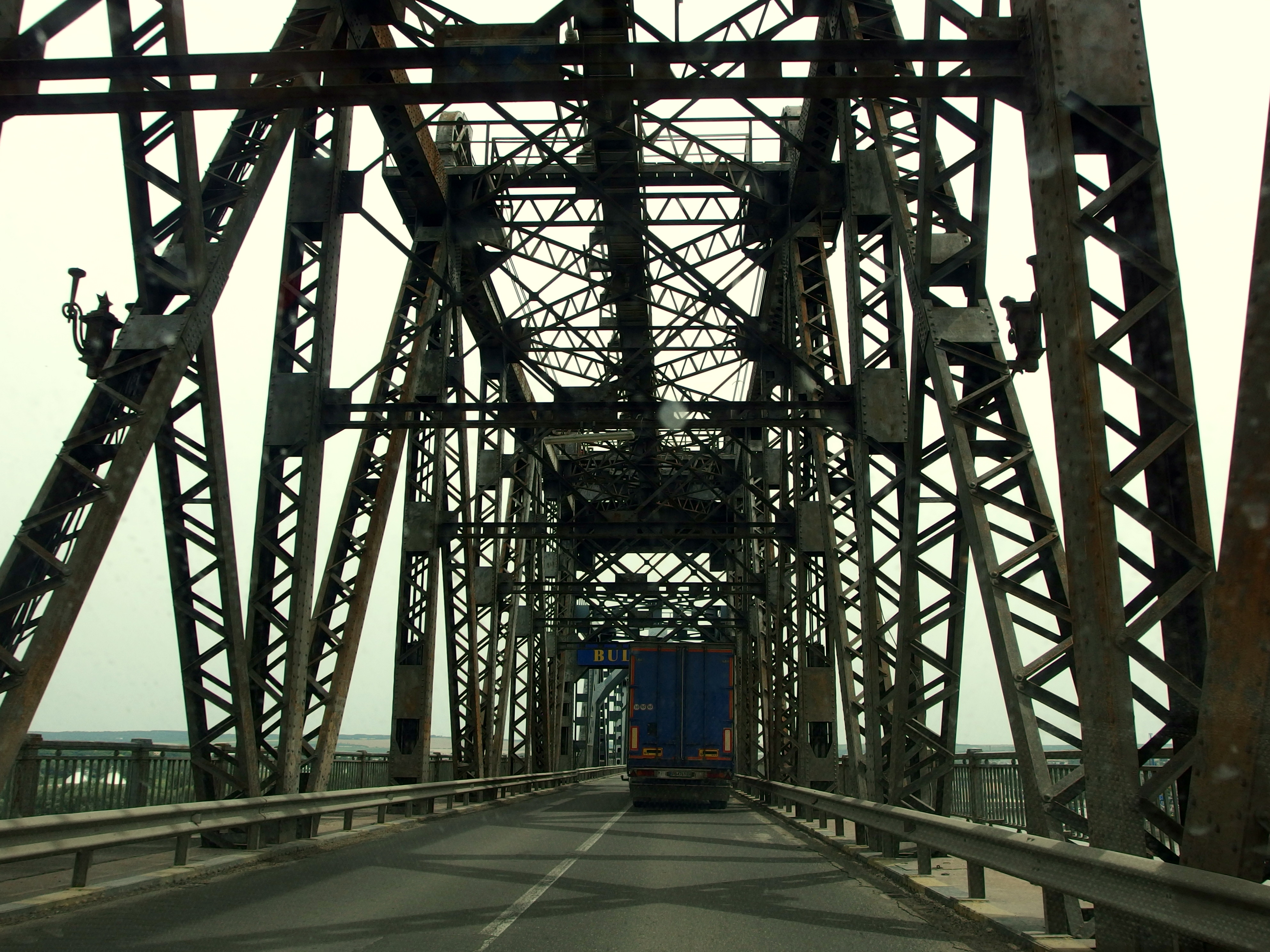|
Potlogi
Potlogi is a commune in Dâmbovița County, Muntenia, Romania with a population of 8,981 people. It is composed of five villages: Pitaru, Podu Cristinii, Potlogi, Românești, and Vlăsceni. The commune lies in the Wallachian Plain, on the banks of the river Sabar. It is located in the southern extremity of Dâmbovița County, from the county seat, Târgoviște, on the border with Giurgiu County; the capital of Romania, Bucharest, is to the east. Natives * Nicolae Grigorescu (1838–1907), one of the founders of modern Romanian painting. Potlogi Castle Potlogi castle was built by Constantin Brâncoveanu Constantin Brâncoveanu (; 1654 – August 15, 1714) was Prince of Wallachia between 1688 and 1714. Biography Ascension A descendant of the Craiovești boyar family and heir through his grandfather Preda of a considerable part of Matei Ba ... in 1698 for his eldest son and presumed heir to the country throne, Constantine. It is one of the most precious monuments of m ... [...More Info...] [...Related Items...] OR: [Wikipedia] [Google] [Baidu] |
Nicolae Grigorescu
Nicolae Grigorescu (; 15 May 1838 – 21 July 1907) was one of the founders of modern Romanian painting. There is a metro station named after Grigorescu in Bucharest. It was given his name in 1990, before which it was named after Communist army general Leontin Sălăjan. Romanian currency features Grigorescu on the 10 Lei bank note. Biography He was born in Pitaru, Dâmbovița County, Wallachia now called Romania. In 1843 his family moved to Bucharest. At a young age (between 1846 and 1850), he became an apprentice at the workshop of the Czech painter Anton Chladek and created icons for the church of Băicoi and the . In 1856 he created the historical composition ''Mihai scăpând stindardul'' ('' Michael the Brave saving the flag''), which he presented to the Wallachian Prince Barbu Ştirbei, together with a petition asking for financial aid for his studies. Between 1856 and 1857, he painted the church of the Zamfira monastery, Prahova County, and in 1861 the church of the ... [...More Info...] [...Related Items...] OR: [Wikipedia] [Google] [Baidu] |
Dâmbovița County
Dâmbovița County (also spelt ''Dîmbovița'', ) is a county ( județ) of Romania, in Muntenia, with the capital city at Târgoviște, the most important economic, political, administrative and cultural center of the county. It has an area of 4,054 km (1.7% of the country's area). Demographics In 2011, it had a population of 518,745 and the population density was 127/km2. It is one of the most densely populated counties in Romania. * Romanians – 96% * Roma (Gypsies) and others – 4% Name The county is named after the Dâmbovița River, which is a name of Slavic origin, derived from ''Дъб, dâmb'', meaning "oak", as it once flowed through the oak forests of the Wallachian Plain. Geography Dâmbovița county has a total area of 4,054 km2. The county's landscape has three main forms. In the north there are mountains from the Southern Carpathians group – the Bucegi Mountains and the Leaotă Mountains. In the center there are the sub-Carpathian hills ... [...More Info...] [...Related Items...] OR: [Wikipedia] [Google] [Baidu] |
Sabar (river)
The Sabar or Răstoaca is a left tributary of the river Argeș in Romania. It discharges into the Argeș in Valea Dragului. e-calauza.ro Its source is near the village Glâmbocel, west of . For much of its length, it flows parallel to and at a short distance from the Argeș. Its length is and its basin size is . Towns and villages The following towns and villages are situated along the river Sabar, from source to mouth: Bântău,[...More Info...] [...Related Items...] OR: [Wikipedia] [Google] [Baidu] |
Constantin Brâncoveanu
Constantin Brâncoveanu (; 1654 – August 15, 1714) was Prince of Wallachia between 1688 and 1714. Biography Ascension A descendant of the Craiovești boyar family and heir through his grandfather Preda of a considerable part of Matei Basarab′s fortune, Brâncoveanu was born on the estate of Brâncoveni and raised in the house of his uncle, ''stolnic'' Constantin Cantacuzino. He rose to the throne after the death of his uncle, prince Şerban Cantacuzino. He was initially supported by his maternal uncles Constantin and Mihai Cantacuzino, but grew increasingly independent from them in the course of his reign. Constantin Cantacuzino retreated to one of his estates and began advocating his son Ștefan's candidacy to the throne. Policies The prince took steps in negotiating anti-Ottoman alliances first with the Habsburg monarchy, and then with Peter the Great's Russia (''see Russo-Turkish War, 1710-1711''): upon the 1710 Russian intervention in Moldavia, the prince contac ... [...More Info...] [...Related Items...] OR: [Wikipedia] [Google] [Baidu] |
Commune In Romania
A commune (''comună'' in Romanian) is the lowest level of administrative subdivision in Romania. There are 2,686 communes in Romania. The commune is the rural subdivision of a county. Urban areas, such as towns and cities within a county, are given the status of ''city'' or ''municipality''. In principle, a commune can contain any size population, but in practice, when a commune becomes relatively urbanised and exceeds approximately 10,000 residents, it is usually granted city status. Although cities are on the same administrative level as communes, their local governments are structured in a way that gives them more power. Some urban or semi-urban areas of fewer than 10,000 inhabitants have also been given city status. Each commune is administered by a mayor (''primar'' in Romanian). A commune is made up of one or more villages which do not themselves have an administrative function. Communes, like cities, correspond to the European Union's level 2 local administrative uni ... [...More Info...] [...Related Items...] OR: [Wikipedia] [Google] [Baidu] |
Muntenia
Muntenia (, also known in English as Greater Wallachia) is a historical region of Romania, part of Wallachia (also, sometimes considered Wallachia proper, as ''Muntenia'', ''Țara Românească'', and the seldom used ''Valahia'' are synonyms in Romanian). It is situated between the Danube (south and east), the Carpathian Mountains (the Transylvanian Alps branch) and Moldavia (both north), and the Olt River to the west. The latter river is the border between Muntenia and Oltenia (or ''Lesser Wallachia''). Part of the traditional border between Wallachia/Muntenia and Moldavia was formed by the rivers Milcov and Siret. Geography Muntenia includes București - Ilfov, Sud - Muntenia, and part of the Sud-Est development regions. It consists of ten counties entirely: * Brăila * Buzău * Călărași * Argeș * Dâmbovița * Giurgiu * Ialomița * Ilfov * Prahova And parts of four others: * Teleorman (the entire county with the exception of Islaz) * Vrancea (southern p ... [...More Info...] [...Related Items...] OR: [Wikipedia] [Google] [Baidu] |
Romania
Romania ( ; ro, România ) is a country located at the crossroads of Central, Eastern, and Southeastern Europe. It borders Bulgaria to the south, Ukraine to the north, Hungary to the west, Serbia to the southwest, Moldova to the east, and the Black Sea to the southeast. It has a predominantly temperate-continental climate, and an area of , with a population of around 19 million. Romania is the twelfth-largest country in Europe and the sixth-most populous member state of the European Union. Its capital and largest city is Bucharest, followed by Iași, Cluj-Napoca, Timișoara, Constanța, Craiova, Brașov, and Galați. The Danube, Europe's second-longest river, rises in Germany's Black Forest and flows in a southeasterly direction for , before emptying into Romania's Danube Delta. The Carpathian Mountains, which cross Romania from the north to the southwest, include Moldoveanu Peak, at an altitude of . Settlement in what is now Romania began in the Lower Paleolithic, with ... [...More Info...] [...Related Items...] OR: [Wikipedia] [Google] [Baidu] |
Wallachian Plain
The Romanian Plain ( ro, Câmpia Română) is located in southern Romania and the easternmost tip of Serbia, where it is known as the Wallachian Plain ( sr, Vlaška nizija/Влашка низија). Part of the historical region of Wallachia, it is bordered by the Danube River in the east, south and west, and by the in the north. Bucharest, the capital of Romania, is located in the central part of the Romanian Plain. It is contiguous to the south with the Danubian Plain ( bg, Дунавска равнина), in Bulgaria. This area is also sometimes referred to as the Danubian Plain ''(Câmpia Dunării)'' in Romanian, though this designation is not specific, because the Danube flows through a number of plains along its course, such as the Hungarian Plain (which is called the Danubian Plain in Slovakia and Serbia), as well as the Bavarian Lowland, also called the Danubian Plain. Subdivisions In Romania, the plain is divided into five subdivisions and the Danube Valley, which ... [...More Info...] [...Related Items...] OR: [Wikipedia] [Google] [Baidu] |
Târgoviște
Târgoviște (, alternatively spelled ''Tîrgoviște''; german: Tergowisch) is a city and county seat in Dâmbovița County, Romania. It is situated north-west of Bucharest, on the right bank of the Ialomița River. Târgoviște was one of the most important cities in the history of Wallachia, as it was its capital between the early 15th and 16th centuries. At the 2011 census, the city had a population of 79,610 people, making it the 26th largest in the country. Name The name ''Târgoviște'' is a Slavic name which the city acquired in the Middle Ages. It is derived from the old Slavonic word for "marketplace", referring to the place rather than the market itself. The name is found in placenames not only in South Slavic areas (Bulgarian Търговище, Serbian Трговиште and Croatian '' Veliko Trgovišće''), but also in West Slavic such as Slovak '' Trhovište'' or Polish '' Targowica''. Additionally, places with the same name are found in Romania, in the reg ... [...More Info...] [...Related Items...] OR: [Wikipedia] [Google] [Baidu] |
Giurgiu County
Giurgiu () is a county (''județ'') of Romania on the border with Bulgaria, in Muntenia, with the capital city at Giurgiu. Demographics In 2011, it had a population of 265,494 and the population density was . * Romanians – over 96% * Romani – 3.5% * Others – 0.5% Geography This county has a total area of . The county is situated on a plain – the Southern part of the Wallachian Plain. The landscape is flat, crossed by small rivers. The southern part is the valley of the Danube which forms the border with Bulgaria. In the North, the Argeș River and Dâmbovița River flow. Neighbours * Călărași County in the East. * Teleorman County in the West. * Ilfov County and Dâmbovița County in the North. * Bulgaria in the South – Ruse Province and Silistra Province. Economy The county has two big areas of development: one close to the city of Giurgiu – The Free Trade Zone Giurgiu, and one in the North of the county due to its proximity with Bucharest ... [...More Info...] [...Related Items...] OR: [Wikipedia] [Google] [Baidu] |
Bucharest
Bucharest ( , ; ro, București ) is the capital and largest city of Romania, as well as its cultural, industrial, and financial centre. It is located in the southeast of the country, on the banks of the Dâmbovița River, less than north of the Danube River and the Bulgarian border. Bucharest was first mentioned in documents in 1459. The city became the capital of Romania in 1862 and is the centre of Romanian media, culture, and art. Its architecture is a mix of historical (mostly Eclectic, but also Neoclassical and Art Nouveau), interbellum ( Bauhaus, Art Deco and Romanian Revival architecture), socialist era, and modern. In the period between the two World Wars, the city's elegant architecture and the sophistication of its elite earned Bucharest the nickname of 'Paris of the East' ( ro, Parisul Estului) or 'Little Paris' ( ro, Micul Paris). Although buildings and districts in the historic city centre were heavily damaged or destroyed by war, earthquakes, and even Nic ... [...More Info...] [...Related Items...] OR: [Wikipedia] [Google] [Baidu] |


